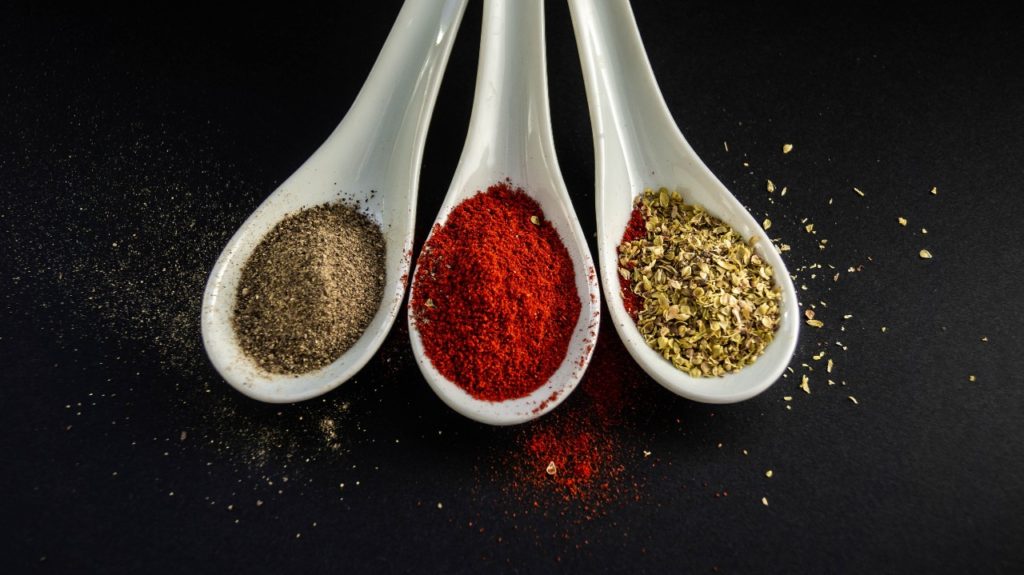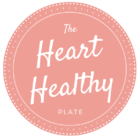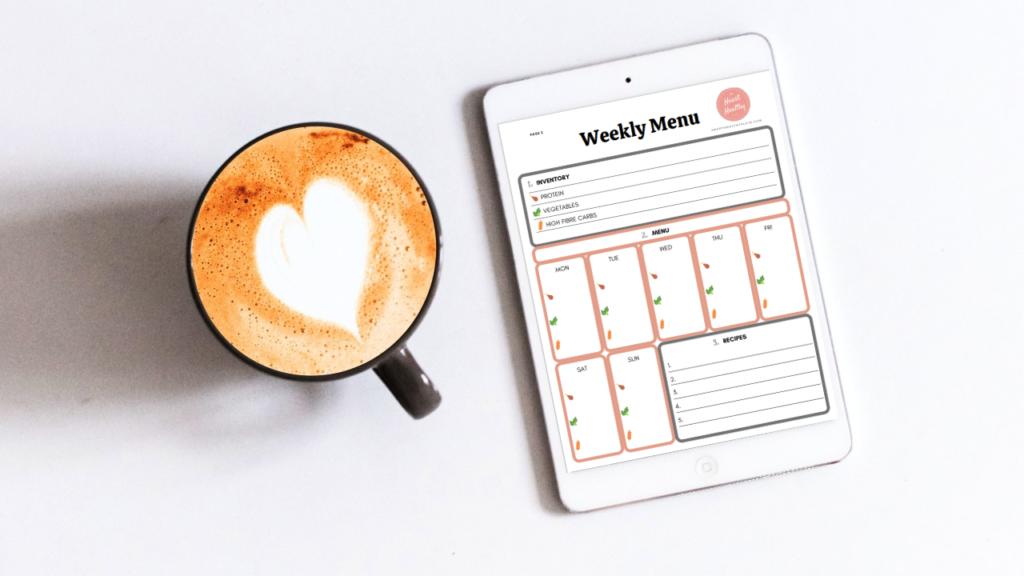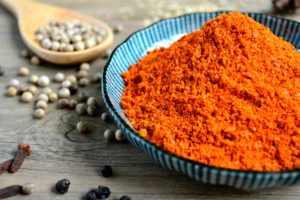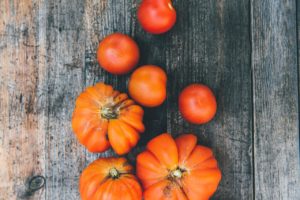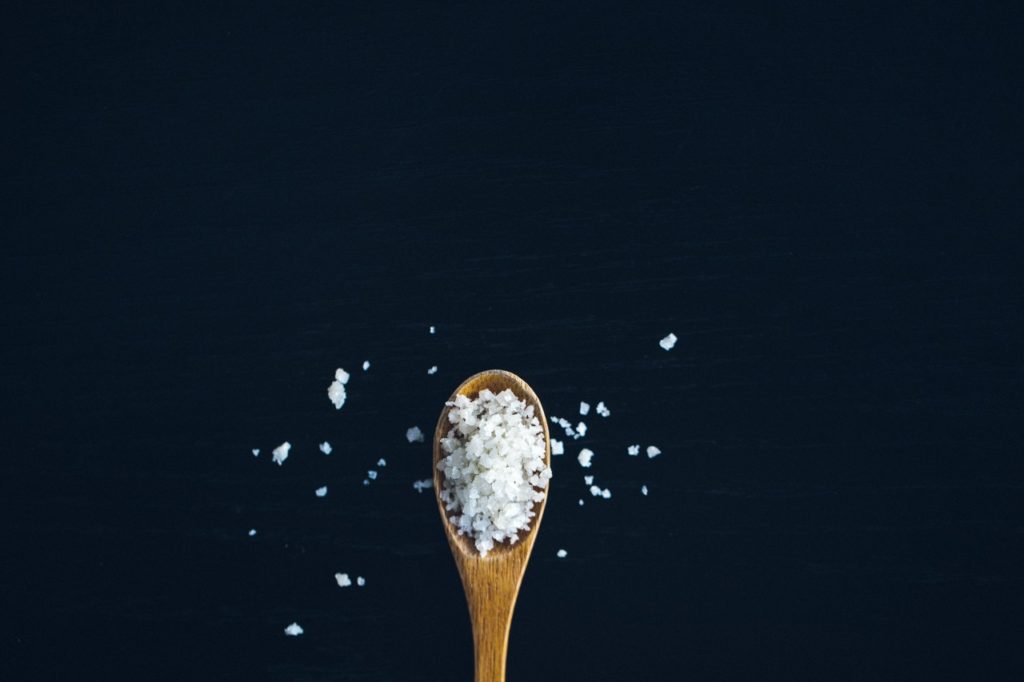

By Samantha Chabior, RD
Have you thought to yourself “I don’t cook with salt, so my diet is low in sodium”?
Well, you might be surprised to find out that 75% of the sodium in our diet comes from processed and restaurant foods, not salt that’s added at the table. If you’re concerned about limiting sodium in your diet, or struggling to manage your blood pressure then this article is for you!
In this article I’ll cover:
- How much sodium you should have each day
- Why it’s important to limit sodium (even if your blood pressure is normal)
- The “Salty Six” – top six hidden food sources of sodium + Easy low sodium swaps
- What to look for on food labels to make low sodium choices
Most of the sodium in our diet comes from foods that are prepared outside of the home. By choosing less processed foods and cooking more often at home we can cut down the amount of sodium in our diet significantly.
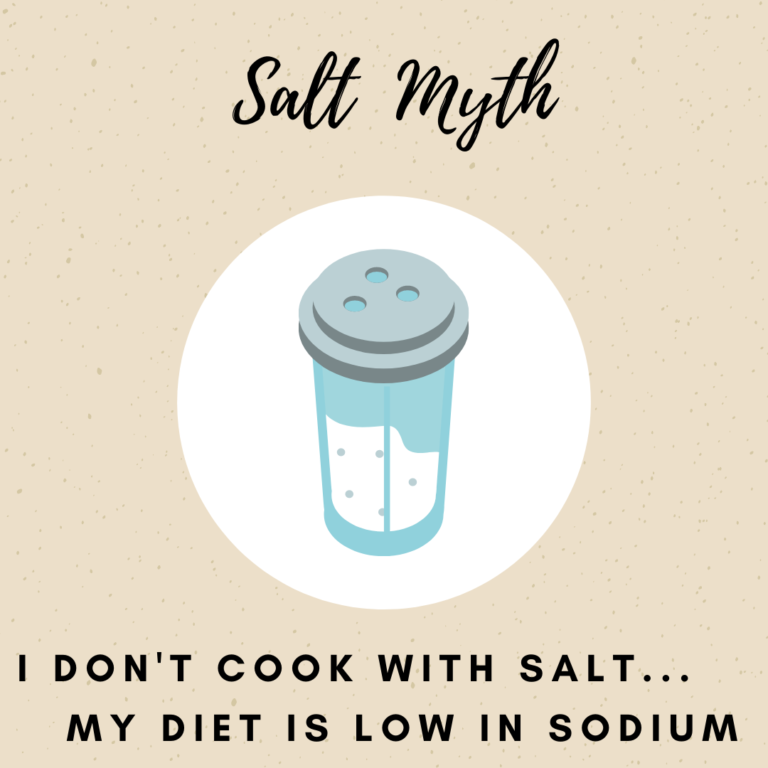
How much sodium should you have each day
The limit for sodium is less than 2300 mg/day, which is equal to about 1 teaspoon of table salt. And most people (especially those who are sensitive to salt and at risk of high blood pressure) should be aiming for closer to 1500 mg which is about 3/4 teaspoon of table salt.
A common worry of some of my clients is that they won’t get enough sodium in their diet if they go on a low sodium diet. The minimum amount of sodium our body needs for normal functioning is VERY small, about 500 mg of sodium per day. This is equal to about ¼ teaspoon of table salt, and would be nearly impossible to go below with today’s diet since most people consume at least some level of processed foods.
Many processed & restaurant foods already contain close to the daily limit of sodium, which means the sodium adds up quickly and can lead to exceeding the recommended limit of 2300 mg without even realizing it. In fact, most North Americans consume 3400 mg sodium each day, which is double the recommended amount!
Before we get into the top contributors to sodium in the North American diet, it’s important to understand why we should limit salt in our diet.

Why it’s important to limit sodium (even if your blood pressure is normal)
Sodium is a mineral that is found in table salt (in the form of sodium chloride), naturally occurs in low amounts in many foods (even vegetables have very small amounts of sodium), and is used as a preservative and flavour enhancer added to many processed foods.
Sodium is regulated by your kidneys and helps to maintain proper fluid balance in your body, and is involved in nerve and muscle function. When you have too much sodium it can cause water to be drawn into your blood vessels, which puts extra stress on your artery walls and heart, and over time can cause blood vessels to stiffen and lead to high blood pressure (hypertension).
High blood pressure can increase your risk of developing heart disease (clogged/damaged arteries) and stroke. Other negative health risks associated with too much sodium include osteoporosis and certain types of cancer. So even if you don’t have high blood pressure, it’s recommended to limit the amount of sodium in your diet.

The “Salty Six” – top six hidden food sources of sodium + Easy lower sodium swaps
The Salty Six is a list of the top foods that contribute the most sodium to the North American diet.
1. Breads & Rolls: I think the one that surprises most people is the sodium content of breads and dinner rolls! These can contain up to 230 mg of sodium per slice, and are often eaten throughout the day by most people (think a slice of bread at breakfast, sandwich at lunch, then dinner rolls). This can really make the sodium add up!
Lower Sodium Swap: skip the roll at dinner, look for lower sodium (less than 120 mg sodium per slice) or no salt added breads and be mindful of how many slices you have each day.
2. Pizza: One slice of pepperoni pizza can easily provide upwards of 700 mg of sodium! This comes from the cheese, pizza dough, pepperoni slices, pizza sauce, and other salty toppings.
Lower Sodium Swap: choose low sodium toppings like veggies, ask for half the usual amount of cheese, and skip the salty toppings like processed meats, feta cheese, olives, and anchovies, or try preparing your own homemade pizza dough with less salt and fresh veggies as toppings.
3. Cold cuts & Cured deli meats: Just 6 thin slices of deli meat can contain up to 800 mg of sodium! You don’t need a large amount of processed food to quickly use up your recommended daily sodium limit.
Lower Sodium Swap: build your sandwich using leftover cooked proteins from dinner (such as roasted chicken breast, salmon etc.) instead of cured meats, low sodium canned salmon or tuna, and lots of veggies like lettuce, tomato, and avocado.
4. Canned soups: 1 can of soup can contain 1700 mg of sodium! That’s more than the recommended 1500 mg per day for most people. When reading the nutrition facts label it’s important to look at the serving size used to calculate the nutrition info. Often a can of soup will contain about 2 cups of soup (around 500 ml), but the nutrition information will be calculated on only 1 cup (half the can) which can lead you to underestimate the sodium content! Since many people eat the entire can of soup at one meal this can really contribute to sodium in the diet.
Lower Sodium Swap: reduce the portion size by eating only half the can or dilute the can with no salt added broth, choose low sodium canned soups (be mindful that soups advertising “25% less sodium” may still be very high in sodium!), or try making your own homemade soup using no salt added broth or a homemade broth.
5. Poultry & Burritos: Processed poultry such as chicken nuggets and patties, as well as raw fresh poultry that is injected with salt solution to make it appear more plump, and burritos or tacos flavoured with packaged seasonings are another big contributor of sodium. Just 2 teaspoons of taco seasoning can have over 400 mg of sodium!
Lower Sodium Swap: choose fresh, unseasoned poultry – be sure to read the ingredients list and look words that indicate salt has been added (see list below for common names for sodium), make your own seasonings at home using cumin, oregano, black pepper, paprika, and garlic powder to cut the sodium to less than 40 mg!
6. Sandwiches & Burgers: Restaurant sandwiches and burgers easily contribute up to 100% of your daily sodium limit. The portion sizes tend to be large, and many salty toppings are commonly used such as cheese, bacon, and cured meats.
Lower Sodium Swap: Choose low sodium toppings such as plain veggies, skip the cheese, condiments and processed meats, choose half a sandwich paired with a salad.

What to look for on food labels to make low sodium choices
When buying packaged foods be sure to read the label and look out for common names for sodium:
• Salt (sodium chloride or NaCl)
• Monosodium glutamate (MSG)
• Baking soda and baking powder
• Disodium phosphate
Compare nutrition labels and look for products that say they have 5% or less of the Daily Value for sodium. This equals about 120 mg of sodium per serving. Remember to check the serving size (at the top of the nutrition facts table) to see how the serving compares to the usual amount you eat. If you usually eat 2 cups of soup, but the nutrition label is calculated for only a 1 cup serving, then you would need to double the amount of sodium listed on the label to figure out how much you’re actually getting at your meal.
When eating out at restaurants, ask to see the nutrition information brochure or check online to see how much sodium is in the meals offered. Most big chains provide this information, which can be very helpful when trying to select a lower sodium restaurant meal.
By trying to limit the amount of processed foods you eat and cooking more meals at home from scratch, you’ll be able to easily cut your salt in half with these simple food swaps!
Be sure to download the FREE heart healthy meal planner and grocery list to help you get started with cooking healthy, low sodium meals today!
